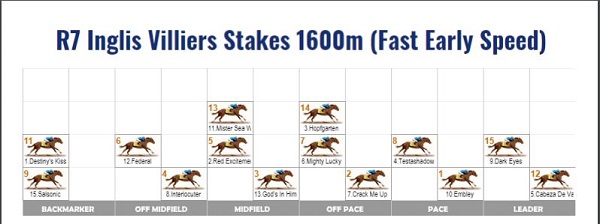This article originally appeared in a series called "Punting Pointers" at this link. We want to share it with our customers as it is very important advice to help you bet better.
This is the wrap-up of an eight-part series aimed at educating punters to help take their wagering to the next level. Brad Gray sought the insights of five of the most respected industry figures when it comes to punting, form analysis and bookmaking.
We’ve made it to the eighth and final part of the series.
This last segment provides Dom, Robbie, Nathan, Daniel and John with the chance to offer punters any parting wisdom, on any element of punting they see fit.
Remember that the appeal about punting for many is there is no perfect formula, and that you'll never stop learning. For what it’s worth, my two cents is to ultimately, back your own judgement. Then you’ve only got yourself to blame which will drive you to continue to make adjustments to improve your punting game.
Dominic Beirne (@domran)
My parting advice to new players is that it’s a circular process. You have to pay attention to why you thought something. The most valuable time you can spend is after the race meeting. Watch the races and ask yourself why that horse won at $10 or $50 and look for the explanations.
You have to analyse post-race what went right and what went wrong for different horses. The post-race analysis is more important than pre-race.
There is always something to learn and new data to create and then analyse. Punting is a challenge but a rewarding one.
Rob Waterhouse (@RobWaterhouse)
I keep saying that you have to be in the marketplace and the track is the place where you are getting the best value. No doubt betting with the corporate bookmakers, and the deals they have for a short time are also good but you have to be in a marketplace where there is not a large market percentage against you.
Achieving the best odds all of the time is the difference between winning and losing. The shopping is the key to it. If someone had done the long hours of form study the early markets are unsophisticated and there are still mistakes in them. If they intend to back horses to win a few hundred dollars they’ll do well out of it.
Nathan Snow (@snowbet)
The best piece of advice that has stuck with me is the harder you work the luckier you get. It’s the truest bit of advice I’ve ever been given.
In terms of general parting advice, learning bankroll management is something that doesn’t get touched on much in these.
I’ve seen so many good form students that couldn’t gamble go bust and others who wouldn’t know one end of a horse from the other, who have an innate ability to understand markets and manage their bankroll well, become successful punters.
It’s about reading a marketplace, not just relying on a set of prices. You can be doing a race and two horses are $5 chances. You’re not looking at being too involved and all of a sudden the market is telling you that one of them is really an $11 chance. Then the $5 chance realistically becomes a $3 chance and all of a sudden you are playing. It’s hard to quantify but that’s what separates the best punters.






